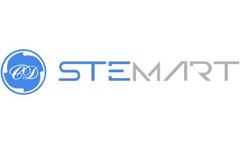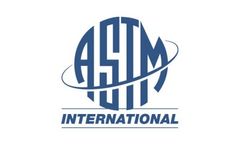Refine by
Astm D6124 06 2011 Standard Articles & Analysis
34 news found
STEMart, a US-based provider of comprehensive services for all phases of medical device development, announces the expansion of its medical device testing capabilities and introduces Balloon Catheter Testing Services for the development of safe and effective medical devices. These reliable testing solutions will meet the evolving needs of the medical device industry and help manufacturers ...
BySTEMart
A new ASTM standard provides an easy-to-perform test method for growing different strains of Clostridium difficile spores, which are used by microbiologists to evaluate antimicrobial drugs. Spore crops grown using the test method (soon to be published as E3011, Test Method for in vitro Production of Clostridium Difficile Spores) will be used in laboratories to test the efficacy of drugs that ...
On July 8 of this year, in Washington, D.C., the United States and the European Union launched negotiations on a proposed free trade agreement called the Transatlantic Trade and Investment Partnership, or TTIP. While the two parties have negotiated free trade agreements with other countries, they have not, until now, attempted one of this magnitude with one another.1 In its Technical Barriers to ...
The purpose of this guide is to provide a procedure for determining the appropriate attributes to evaluate in a shelf-life study for an endovascular device. 1. Scope 1.1 This guide addresses the determination of appropriate device attributes for testing as part of a shelf-life study for endovascular devices. Combination and ...
The shear and bending fatigue tests are used to determine the effect of variations in material, geometry, surface condition, stress, and so forth, on the fatigue resistance of coated metallic materials subjected to direct stress for up to 107 cycles. These tests may be used as a relative guide to the selection of coated materials for service under condition of repeated stress. In order ...
This specification covers the materials, dimensional tolerances, constructions, and mechanical properties for standard metallic implantable strands and cables. Materials shall be manufactured using equivalent size wires in the cold-worked and stress-relieved or annealed condition. Standard strand constructions shall be 1×3, 1×7, and 1×19 strand. Cabling ...
Intervertebral body fusion devices are generally simple geometric shaped devices, which are often porous or hollow in nature. Their function is to support the anterior column of the spine to facilitate arthrodesis of the motion segment. This test method is designed to quantify the subsidence characteristics of different designs of intervertebral body fusion devices since ...
This specification covers polyoxymethylene (acetal) resin for medical applications. This specification provides requirements and associated test methods for a form of this thermoplastic which is intended for use in manufacturing medical devices, instrumentation or components thereof. Physical and mechanical properties of medical grade ...
This guide is intended to provide guidance for the specification and selection of fabrication methods for silicones used in medical devices. It also provides guidance relative to testing that might be done to qualify lots of acceptable material, based on desired performance properties. Silicone manufacturers supplying material ...
This specification covers the raw material and final product requirements, and the associated test methods for the selection of porous high density and ultra high molecular weight polyethylenes intended for use in surgical implants. The porous polyethylene may be used as a free standing product or as a coating on a substrate in nonloaded ...
4.1 This guide is intended to provide guidance for the specification and selection of silicone materials for medical device applications. Silicone manufacturers supplying materials to the medical device industry should readily provide information regarding non-proprietary product formulation to their customers either directly, or ...
This specification covers the chemical, mechanical, and metallurgical requirements for wrought annealed titanium-6aluminum-4vanadium ELI (extra low interstitial) alloy (R56401) to be used in the manufacture of surgical implants. The products are classified into: strip, sheet, plate, bar, forging bar, and wire. The heat analysis shall conform to the ...
1. Scope 1.1 This specification covers the material requirements for high-purity, dense aluminum oxide for load-bearing surgical implant applications. 1.2 This specification does not cover finished parts (for example, femoral heads, acetabular inserts, dental implants and the like). It is intended as a ...
This terminology covers polymeric biomaterials in medical and surgical devices. Terms are defined as they are used relative to medical and surgical materials and devices. Terms that are generally understood and in ...
This specification covers two dimensionally different (short and long) disposable glass micropipets used primarily to collect whole human blood specimens for clinical analysis and testing. Short and long pipets are available as coated with heparin (Type I) or uncoated (Type II).The pipets shall be fabricated from borosilicate glass, Type I, ...
This specification covers total knee replacement (TKR) prostheses used to provide functioning articulation by employing femoral and tibial components, allowing a minimum of 110' of flexion to high flexion. Replaceable components of modular designs, for example, tibial articulating surfaces and all components labeled for or capable of being used with cement, regardless of ...
This specification covers standard requirements for ferritic/austenitic (duplex) stainless steel pipe that is electric fusion welded with addition of filler metal suitable for corrosive service. Heat treatment shall be performed after welding and in accordance with specified temperature and quench conditions. Several grades of ferritic/austenitic steel shall ...
The requirements in this practice are intended to control the quality of the radiographic image of cast metallic surgical implants and related weldments. 1. Scope 1.1 This practice covers the procedure for radiographic testing of cast metallic surgical implants and related weldments. 1.2 The values ...
This specification covers standards for Grade 660 (Class A, B, C, and D) , Grade 651 (Class A and B), Grade 662 (Class A and B), and Grade 665 (Class A and B) of bolting materials for use in high-temperature service such as fasteners, for pressure vessels and valve flanges. Bolting materials in this specification covers rolled, forged, or hot-extruded bars, and also ...
This specification covers the chemical, mechanical, and metallurgical requirements for wrought titanium-15 molybdenum alloy to be used in the manufacture of surgical implants. The product shall be classified as: strip; sheet; plate; ...


